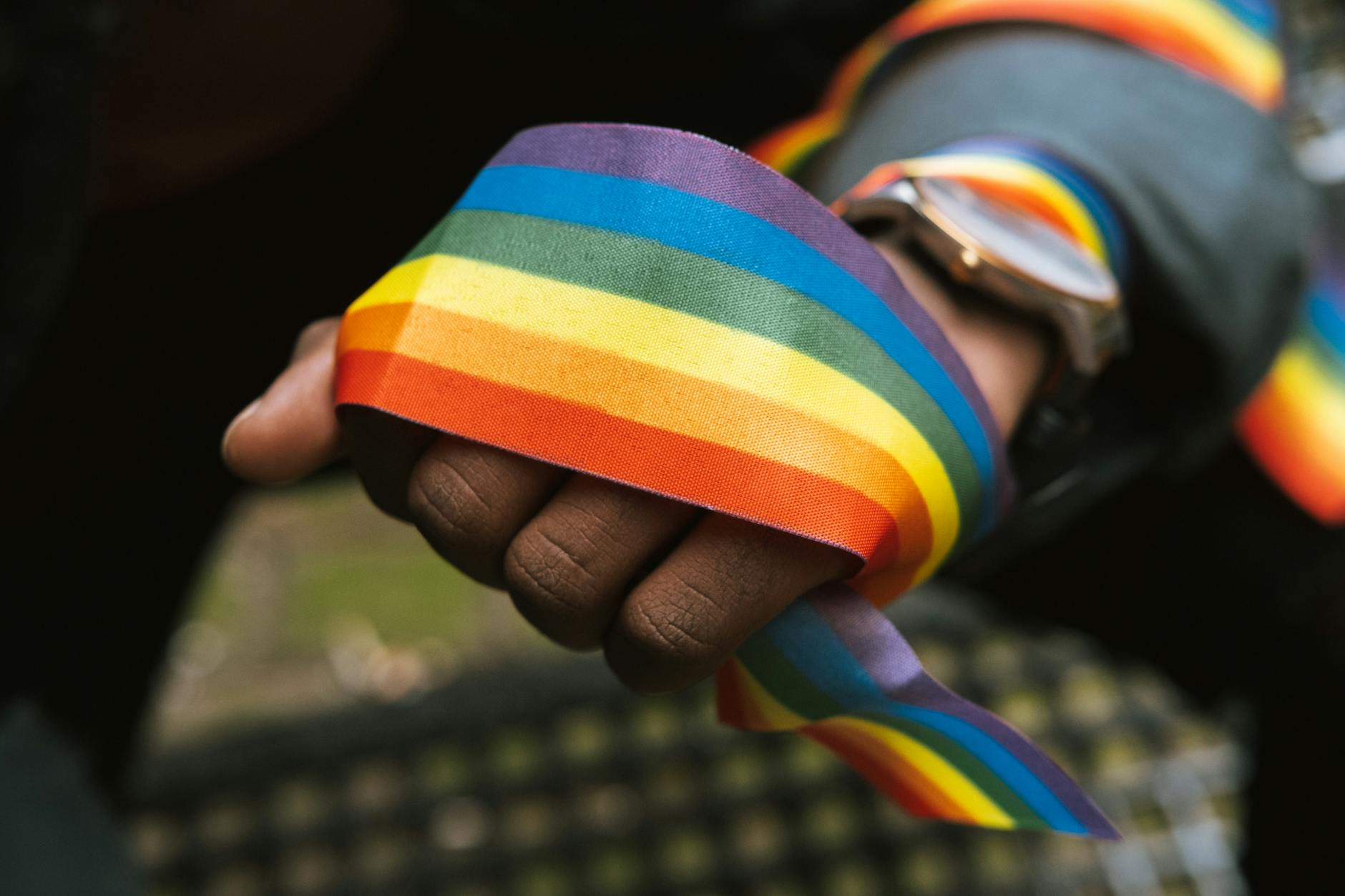It’s one of the most common survey questions: Are you male or female?
We’ve known for a long time that sex affects your health. At first glance, it seems simple: women get ovarian cancer and men get prostate cancer. But the differences go beyond body parts. Some health problems are more common in one sex, and they can show up differently (for example, heart attack symptoms are different in men than women). Today, scientists know that sex is an important part of health research.
When we talk about health research, we usually stick to two biological sexes: male and female. But this ignores many important factors for our health and well-being, including gender. We know that gender—the social, cultural, and psychological aspects of sexual identity—profoundly influences health behaviors, healthcare access, and treatment outcomes. Ignoring gender in health research leads to incomplete data, flawed policies, and interventions that fail to address the needs of diverse populations.

The Sex Spectrum
Biological sex isn’t just male or female: it’s a range. Sex is often linked to genes, where men have XY chromosomes and women have XX chromosomes. But some people are born with XO, XXY, and XYY chromosomes. And even if a person is male or female genetically, they might have both male and female body parts. So in many cases, the answer to that universal survey question isn’t as simple as it may seem.
Sex vs. Gender
And then there’s another layer to consider: gender.
While sex is a biological trait, gender is about how you view yourself. Many people are biologically one sex, but identify as something different. This is called being transgender. For example, a trans person might have been born a boy, but always knew that they were a girl. Other people might not identify as either a boy or girl, or they might be somewhere in the middle. This is called being nonbinary.
Gender Norms Shape Health Behaviors
Social and cultural expectations shape everything we do, including things that influence our health. For example, boys may engage in riskier behavior (like drinking and smoking) than girls in an effort to appear more masculine. This can raise their risk for alcohol poisoning and lung cancer. Meanwhile, girls may feel pressure to meet beauty standards, increasing their risk for eating disorders. Transgender and nonbinary individuals may experience discrimination and stress, both of which raise their risk for mental health conditions. The bottom line? Although biological sex matters, gender expectations may be just as, if not more, important.
Transgender Health Disparities
We don’t have a lot of research on transgender health. But what we do know paints a frightening picture. Here is a brief overview of some of the challenges that trans people face.
Discrimination and Stress

Being different from your peers is stressful. Just ask anyone in high school. But that’s just the beginning. Many transgender and nonbinary youth face bullying and discrimination. These challenges fuel mental health challenges like depression, self-harm, eating disorders, and suicidality, all of which are more common among transgender and nonbinary youth than their cisgender peers.1 One survey found that 2 in 5 trans people had attempted suicide.2
Over time, this stress takes a physical toll in the form of inflammation, which raises the risk for heart attacks and other health problems.3 Plus, many people cope with stress by turning to harmful behaviors like drinking and smoking.2,4
Access to Resources
Having a roof over your head, nutritious food on the table, and a rewarding job to pay for it are all important parts of a healthy lifestyle. But many transgender people struggle to meet their basic needs. This is largely because harassment and discrimination can make it harder to get and keep a job. One survey found that half of transgender respondents had been harassed or mistreated at work. Many had to hide their true identity in order to keep their jobs.2 Perhaps because of this, transgender adults have higher rates of unemployment, poverty, and housing instability than non-trans adults.5 In order to survive, some turn to sex work or drug sales. This can increase their risk for negative health outcomes like HIV infection.2
Health Care

For some health conditions, the most important thing may be catching the problem early. Early diagnosis goes hand-in-hand with early treatment, and some conditions, like many cancers, are easiest to treat in their early stages. Overall, regular health care does just what it sounds like: it helps keep you healthy.
However, gender can impact a person’s access to regular health care. Many trans people experience financial hardships that can make it harder to afford healthcare. One study found that more than half of trans respondents had postponed healthcare because they couldn’t afford it.5
The problems don’t end with getting to the doctor’s office. Once there, many trans people are mistreated or shamed. In one survey, 28% of trans people said they had been harassed in a doctor’s office. Nearly 20% were refused care because they were transgender, with higher numbers among people of color. Some states have laws preventing youth from receiving gender-affirming care, which can improve mental health outcomes.1,6 Because of all these things, many trans people are reluctant to go to the doctor: 28% of trans people have postponed healthcare because of discrimination.2
Gender Intersectionality
Your identity isn’t just your gender: it’s also your race, culture, and more. Being part of a marginalized group can raise your risk for poor health. But when you belong to more than one marginalized group, the challenges you face might get bigger or look different. For example, a Black transgender woman may experience both trans-phobia and racism. People may have different stereotypes of and expectations for a Black trans woman than a white trans woman, leading to different types of harassment.
Because of the added layers of discrimination, many trans people of color have worse health than white trans people. The same goes for trans people who are disabled or have other marginalized identities.
Raising Transgender Visibility

This is all just the tip of the iceberg. The problem is, we have no idea how big the actual iceberg is.
That’s because for the longest time, researchers assumed everyone was either male or female. We didn’t know trans people had such poor health outcomes, because we simply didn’t have the data. We weren’t asking the right questions.
Now, we know that trans people face many challenges that non-trans people don’t. But we don’t know what all those challenges are, or how deep they go. We know that the most powerful solution may be the simplest—and the hardest: overcoming discrimination. But what does that even look like?
Lack of Gender Research
We can’t change stereotypes overnight. But we can start with a first step: acknowledging that trans people exist. Because right now, trans people are treated like they are invisible. Society treats trans people like they don’t exist. And isn’t the most fundamental of all human rights, to simply be able to exist?
Let’s go back to that universal survey question: Are you male or female? It completely erases the fact that trans people exist.
And that’s not all. It hides the deeper truth: trans people have worse health outcomes because of discrimination.
If we truly want to support the trans community, we need to see them. We need to acknowledge they exist. And we need to understand the challenges they face.
It’s going to be a long journey to equality for trans and nonbinary folks. But if the first step is acknowledging they exist, then science can help. It’s as simple as changing that universal survey question to “What gender do you identify as?” It’s as simple as including trans and nonbinary answers in the multiple choice options.
Moving Forward: Integrating Gender into Health Research
To get more accurate results and improve health for everyone, researchers and doctors must recognize the importance of gender in shaping health. This means:
- Expanding clinical trials to include diverse gender identities
- Considering the role of gender norms
- Addressing bias in medical school and the doctor’s office
- Ensuring that health policies and programs are inclusive of all gender identities
And this isn’t just a job for researchers. Everyone can play a role in making trans people visible, whether that’s sharing Pride posts on social media, listening nonjudgmentally to a friend exploring their gender identity, or reaching out to researchers and lawmakers to encourage the inclusion of trans people in health research. It won’t be a short or easy road. But every step along the way counts.
References:
- Connolly, M. D., Zervos, M. J., Barone, C. J., Johnson, C. C., & Joseph, C. L. M. (2016). The mental health of transgender youth: Advances in understanding. Journal of Adolescent Health, 59(5), 489–495. https://doi.org/10.1016/j.jadohealth.2016.06.012
- National LGBTQ Task Force. (2011). Injustice at every turn: A report of the National Transgender Discrimination Survey. https://www.thetaskforce.org/resources/injustice-every-turn-report-national-transgender-discrimination-survey/
- Alzahrani, T., Ryan, A., Dwairy, A., McCaffrey, J., Yunus, R., Forgione, J., et al. (2019). Cardiovascular disease risk factors and myocardial infarction in the transgender population. Circulation: Cardiovascular Quality and Outcomes, 12(4). https://doi.org/10.1161/CIRCOUTCOMES.119.005597
- Centers for Disease Control and Prevention. (2024). 2019 BRFSS survey data and documentation. https://www.cdc.gov/brfss/annual_data/annual_2019.html
- Medina, C. (2021). Fact sheet: Protecting and advancing health care for transgender adult communities. Center for American Progress. https://www.americanprogress.org/article/fact-sheet-protecting-advancing-health-care-transgender-adult-communities/
- Dawson, L., Kates, J., & Musumeci, M. (2022). Youth access to gender affirming care: The federal and state policy landscape. https://www.kff.org/other/issue-brief/youth-access-to-gender-affirming-care-the-federal-and-state-policy-landscape/


Leave a Reply